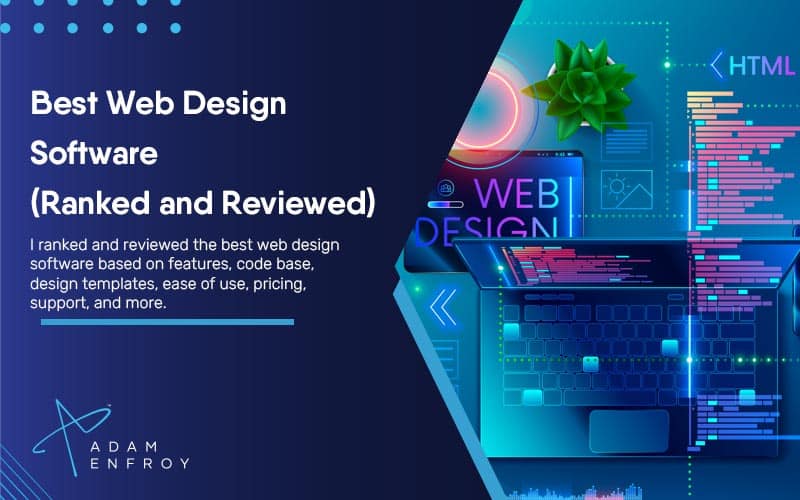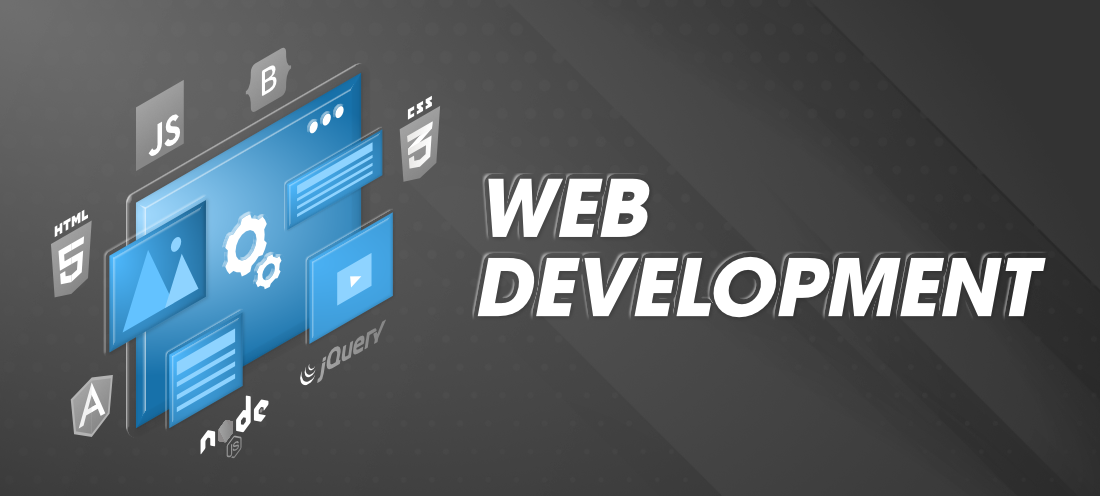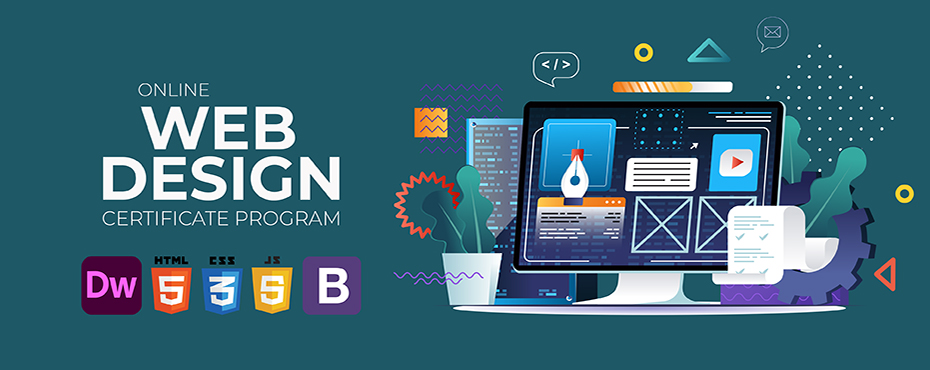All Categories
Featured
Table of Contents
- – Web Design Services - Networksolutions.com Tip...
- – Penner Home - Durham Web Design - Penner Web ...
- – Web Design Ledger: Homepage Tips and Tricks:
- – What Can I Do With A Web Design And Developme...
- – Web Design Vs. Web Development - Upwork Tips ...
- – What Is Web Design? The Ultimate Guide To Web...
- – Powderkeg: Web Design Madison, Wi Tips and T...
- – Webpage Design (Article) - Further Learning ...
- – Web Page Design: A Comprehensive Guide - Ado...
- – Why Web Design Is Dead - - Ux Magazine Tips ...
- – Web Design Vs. Web Development - Upwork Tips...
Web Design Services - Networksolutions.com Tips and Tricks:
Quick summary Use and the utility, not the visual style, figure out the success or failure of a website. Because the visitor of the page is the only individual who clicks the mouse and therefore chooses whatever, user-centric style has developed as a standard approach for successful and profit-oriented website design - web design frederick md.
and the utility, not the visual style, determine the success or failure of a site. Given that the visitor of the page is the only person who clicks the mouse and for that reason decides everything, user-centric style has actually ended up being a basic technique for successful and profit-oriented website design. After all, if users can't use a function, it might as well not exist.
g. where the search box ought to be placed) as it has actually currently been performed in a variety of posts; rather we concentrate on the approaches which, used effectively, can result in more advanced style choices and streamline the process of perceiving presented details. Please discover that you might be thinking about the usability-related short articles we have actually published prior to: Principles Of Good Website Design And Reliable Web Design Standards, In order to utilize the principles appropriately we initially need to understand how users engage with sites, how they think and what are the basic patterns of users' habits.
Penner Home - Durham Web Design - Penner Web Design ... Tips and Tricks:
Visitors glance at each new page, scan a few of the text, and click on the first link that captures their interest or vaguely resembles the important things they're searching for. In truth, there are large parts of the page they do not even look at. Many users browse for something fascinating (or beneficial) and clickable; as soon as some promising prospects are found, users click.
If a page offers users with high-quality content, they are willing to compromise the content with ads and the style of the site. This is the reason that not-that-well-designed sites with top quality content gain a great deal of traffic over years. Material is more crucial than the style which supports it.

Very simple principle: If a website isn't able to fulfill users' expectations, then designer stopped working to get his task done properly and the company loses money. The greater is the cognitive load and the less user-friendly is the navigation, the more ready are users to leave the site and search for alternatives.
Web Design Ledger: Homepage Tips and Tricks:
Neither do they scan website in a linear style, going sequentially from one website section to another one. Rather users satisfice; they select the very first sensible choice. As quickly as they discover a link that appears like it may lead to the objective, there is an extremely excellent chance that it will be immediately clicked.
It does not matter to us if we understand how things work, as long as we can utilize them. If your audience is going to imitate you're developing billboard, then design excellent billboards." Users desire to be able to control their web browser and depend on the consistent information discussion throughout the site.
If the navigation and site architecture aren't intuitive, the variety of concern marks grows and makes it harder for users to comprehend how the system works and how to get from point A to point B. A clear structure, moderate visual ideas and easily recognizable links can assist users to discover their path to their objective.
What Can I Do With A Web Design And Development Degree? Tips and Tricks:

claims to be "beyond channels, beyond items, beyond circulation". What does it mean? Since users tend to check out websites according to the "F"-pattern, these 3 declarations would be the first aspects users will see on the page once it is packed. Although the style itself is easy and instinctive, to comprehend what the page has to do with the user requires to look for the response.
When you have actually attained this, you can communicate why the system is useful and how users can benefit from it. Do Not Misuse Users' Perseverance, In every job when you are going to provide your visitors some service or tool, try to keep your user requirements very little.
Newbie visitors want to, not filling long web kinds for an account they may never ever utilize in the future. Let users explore the website and discover your services without forcing them into sharing personal information. It's not affordable to force users to get in an email address to check the feature.
Web Design Vs. Web Development - Upwork Tips and Tricks:
And that's what you want your users to feel on your web website. The registration can be done in less than 30 seconds as the type has horizontal orientation, the user doesn't even require to scroll the page.
A user registration alone is sufficient of an impediment to user navigation to reduce incoming traffic. 3. Handle To Focus Users' Attention, As sites provide both fixed and vibrant material, some aspects of the user interface attract attention more than others do. Certainly, images are more appealing than the text just as the sentences marked as vibrant are more attractive than plain text.
Focusing users' attention to specific areas of the website with a moderate usage of visual aspects can assist your visitors to obtain from point A to point B without thinking about how it really is expected to be done. The less enigma visitors have, the they have and the more trust they can establish towards the company the website represents.
What Is Web Design? The Ultimate Guide To Website Design ... Tips and Tricks:
Aim For Function Direct exposure, Modern web styles are typically slammed due to their method of guiding users with visually appealing 1-2-3-done-steps, big buttons with visual results and so on. From the style perspective these aspects in fact aren't a bad thing.
The site has 9 main navigation alternatives which are visible at the first glimpse. What matters is that the material is well-understood and visitors feel comfortable with the method they communicate with the system.
com gets directly to the point. No adorable words, no overemphasized declarations. Rather a cost: simply what visitors are looking for. An optimal option for efficient writing is touse short and succinct expressions (come to the point as quickly as possible), use scannable layout (classify the content, utilize numerous heading levels, use visual elements and bulleted lists which break the circulation of consistent text blocks), use plain and objective language (a promotion does not require to sound like advertisement; give your users some sensible and unbiased reason they ought to use your service or remain on your site)6.
Powderkeg: Web Design Madison, Wi Tips and Tricks:
Users are hardly ever on a site to enjoy the style; additionally, most of the times they are looking for the info regardless of the style - web design frederick md. Pursue simplicity instead of intricacy. From the visitors' point of view, the very best website style is a pure text, without any advertisements or further material blocks matching precisely the question visitors utilized or the content they've been searching for.
Finch plainly presents the information about the website and gives visitors an option of options without overcrowding them with unnecessary material. Not only does it assist to for the visitors, but it makes it possible to perceive the info provided on the screen.
Complex structures are more difficult to check out, scan, analyze and work with. If you have the choice in between separating two design sections by a visible line or by some whitespace, it's typically better to utilize the whitespace solution. (Simon's Law): the better you handle to provide users with a sense of visual hierarchy, the simpler your material will be to perceive.
Webpage Design (Article) - Further Learning - Khan Academy Tips and Tricks:
The same conventions and guidelines need to be applied to all elements.: do the most with the least quantity of cues and visual components. 4 significant points to be considered: simpleness, clarity, distinctiveness, and focus. Simpleness includes only the components that are essential for communication. Clearness: all components ought to be created so their meaning is not unclear.
Conventions Are Our Good friends, Conventional style of website components does not result in a dull website. As they minimize the learning curve, the need to figure out how things work. It would be a functionality headache if all sites had various visual discussion of RSS-feeds. That's not that different from our routine life where we tend to get used to standard concepts of how we arrange information (folders) or do shopping (placement of items).
understand what they're expecting from a site navigation, text structure, search placement etc. A typical example from use sessions is to translate the page in Japanese (presuming your web users don't know Japanese, e. g. with Babelfish) and offer your use testers with a job to discover something in the page of different language.
Web Page Design: A Comprehensive Guide - Adobe Xd Ideas Tips and Tricks:
Test Early, Test Frequently, This so-called TETO-principle needs to be applied to every web style task as usability tests often offer into substantial issues and concerns related to an offered layout. Test not too late, not too little and not for the incorrect reasons.
Some important points to remember: according to Steve Krug, and testing one user early in the task is better than screening 50 near completion. Accoring to Boehm's very first law, errors are most frequent during requirements and design activities and are the more expensive the later on they are eliminated.
That suggests that you design something, test it, repair it and after that test it again. There might be problems which have not been found throughout the first round as users were practically blocked by other issues. use tests. Either you'll be indicated the problems you have or you'll be pointed to the lack of significant style defects which remains in both cases a beneficial insight for your task.
Why Web Design Is Dead - - Ux Magazine Tips and Tricks:

This holds for designers. After you've dealt with a site for couple of weeks, you can't observe it from a fresh perspective anymore. You understand how it is built and therefore you understand precisely how it works you have the knowledge independent testers and visitors of your site would not have.
It can be connected to other areas such as graphic design, user experience, and multimedia arts, however is more appropriately seen from a technological perspective. It has actually ended up being a large part of people's everyday lives. It is tough to think of the Web without animated graphics, various designs of typography, background, videos and music.

During 1991 to 1993 the World Wide Web was born. Text-only pages might be viewed utilizing a basic line-mode web browser. There had actually been no integrated approach to graphic style aspects such as images or noises.
Web Design Vs. Web Development - Upwork Tips and Tricks:
The W3C was produced in October 1994 to "lead the World Wide Web to its complete capacity by establishing common procedures that promote its advancement and guarantee its interoperability." This prevented any one business from monopolizing a propriety browser and programming language, which could have modified the effect of the World Wide Web as a whole.
As this has taken place the technology of the web has actually likewise moved on. There have likewise been substantial changes in the way individuals use and access the web, and this has actually altered how websites are designed. Considering that completion of the web browsers wars [] brand-new web browsers have actually been launched. Much of these are open source meaning that they tend to have much faster advancement and are more helpful of brand-new standards.
Learn more about Lovell Media Group LLC or TrainACETable of Contents
- – Web Design Services - Networksolutions.com Tip...
- – Penner Home - Durham Web Design - Penner Web ...
- – Web Design Ledger: Homepage Tips and Tricks:
- – What Can I Do With A Web Design And Developme...
- – Web Design Vs. Web Development - Upwork Tips ...
- – What Is Web Design? The Ultimate Guide To Web...
- – Powderkeg: Web Design Madison, Wi Tips and T...
- – Webpage Design (Article) - Further Learning ...
- – Web Page Design: A Comprehensive Guide - Ado...
- – Why Web Design Is Dead - - Ux Magazine Tips ...
- – Web Design Vs. Web Development - Upwork Tips...
Latest Posts
Web Design Museum 1991 – 2006 Tips and Tricks:
Basics Of Web Development & Coding Specialization - Coursera Tips and Tricks:
Web Page Design: A Comprehensive Guide - Adobe Xd Ideas Tips and Tricks:
More
Latest Posts
Web Design Museum 1991 – 2006 Tips and Tricks:
Basics Of Web Development & Coding Specialization - Coursera Tips and Tricks:
Web Page Design: A Comprehensive Guide - Adobe Xd Ideas Tips and Tricks: